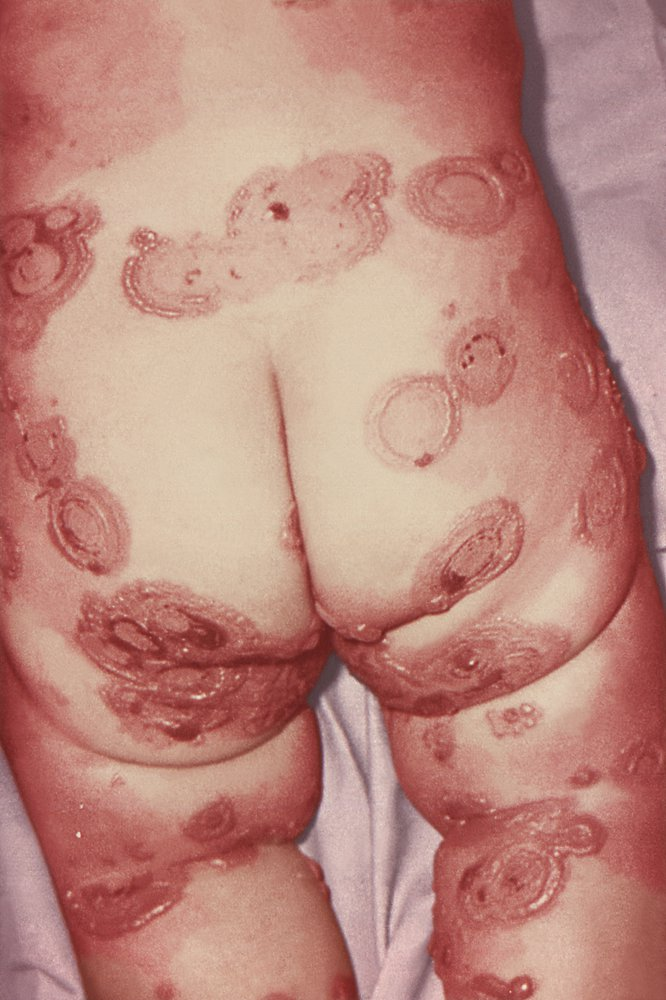Epidemiology
Etiology
- Drugs (most common trigger, ∼ 80% of cases)
- Antibiotics: sulfonamides (e.g., TMP/SMX), aminopenicillins, rifampicin
- Antiepileptics: phenytoin, phenobarbital, lamotrigine, valproic acid, carbamazepine, ethosuximide
- Oxicam NSAIDs (e.g., piroxicam)
- Allopurinol
- Sulfasalazine
- Risk factors
- HIV infection
Pathophysiology
The pathogenesis is not completely understood but is thought to involve a delayed hypersensitivity reaction (type IV): ↑ activity of drug-specific cytotoxic T cells → release of granulysin (a cytolytic protein) by an unknown mechanism → damage to keratinocytes
Clinical features
- Prodromal phase (begins 1–3 weeks after the intake of medication): high fever (usually > 39°C or 102°F), malaise, sore throat, myalgia and/or arthralgia
- Mucocutaneous lesions appear 1–3 days after the onset of prodromal symptoms
- Cutaneous manifestation sequence
- Painful, erythematous/purpuric macules
- May have a targetoid appearance (cockade lesions)
- Typically seen over the face and trunk
- Lesions form bullae and/or vesicles; positive Nikolsky sign
- Extensive, full-thickness epidermal necrosis and sloughing (resembling large superficial burns)

- Painful, erythematous/purpuric macules
- Mucosal membranes: almost always involved
- Cutaneous manifestation sequence
- Shock may develop
Tip
The involvement of mucous membranes differentiates SJS from staphylococcal scalded skin syndrome (SSSS) in which mucous membranes are spared!